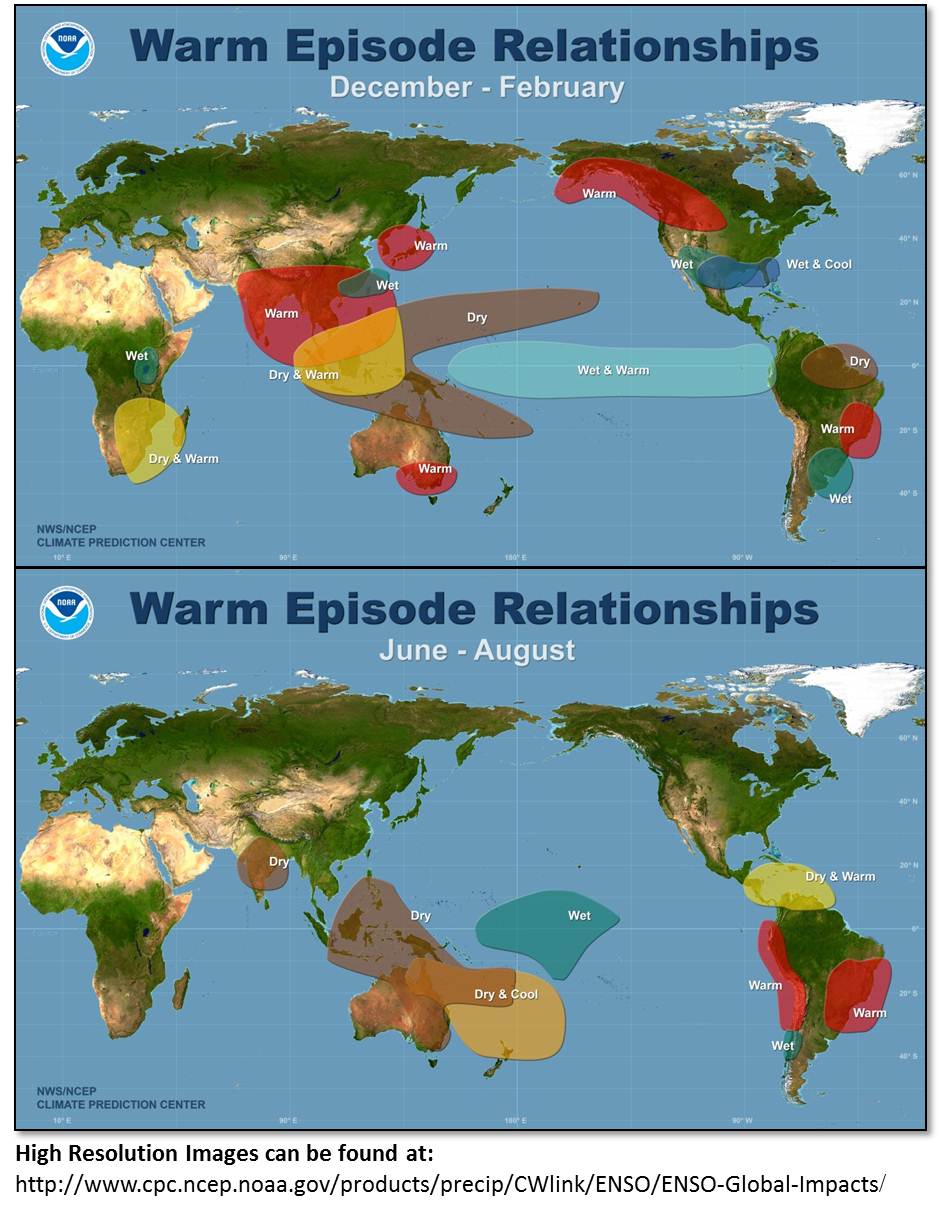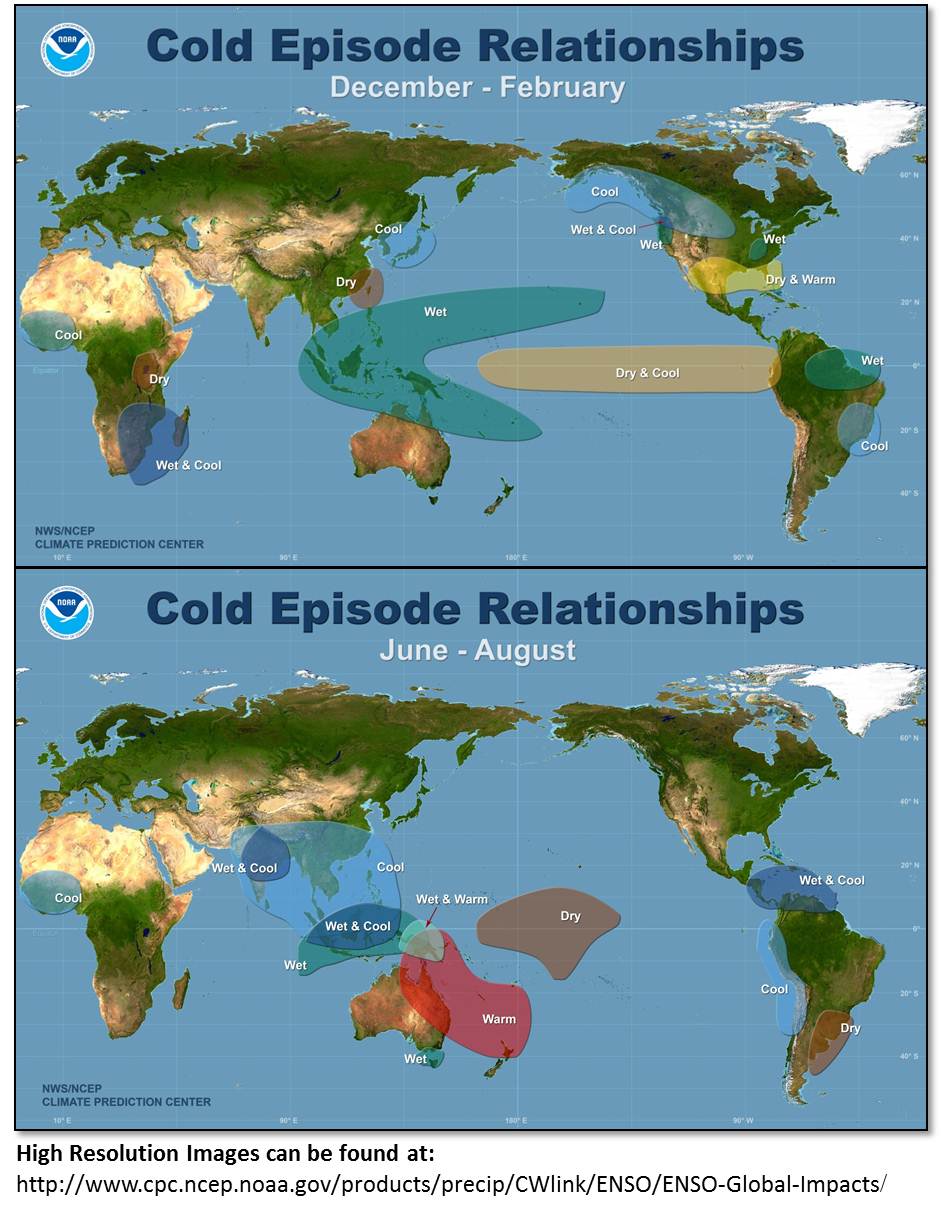In the first post in this series, we looked at what ENSO is. Remember that the atmosphere and oceans are always moving, and in general, those movements follow a specified pattern. When the movement deviates from normal, to either an El Niño or La Niña, weather conditions in different regions of the world will respond.
But who feels these effects first? Usually, equatorial countries that border the Pacific Ocean. But even these countries can experience vastly different weather conditions. During an El Niño event, Ecuador, for example, may experience severe rain and flooding, while the northern region of Australia may have a drought. As the event continues, the regions affected grow, and countries such as India, Chile and Madagascar will feel the effects.
By studying many El Niño and La Niña events over time, scientists are able to predict that when an El Niño event occurs, during the months of December through February and then in the following June through August, the following areas will see the conditions indicated in the following image:

Feeling the effects of a warm episode. Image courtesy of NOAA.
Likewise, the relationships for La Niña have been documented in a similar manner, with different effects felt in various regions:

Feeling the effects of a cold episode. Image courtesy of NOAA.
During the historical El Niño event of 1997, GLOBE students monitored the event by collecting air, water and soil temperature, solid and liquid precipitation and soil moisture data through their corresponding protocols. These students used historical data as well as their observations to test the hypothesis laid out by scientists in the images above. It was important to students not highlighted in the regions above to also collect data – they too were testing the hypothesis.
Even though it’s been many years since the 1997 event, this oscillation continues to occur and you are able to investigate the connection between this Pacific Ocean oscillation and your local weather.
Suggested activity: Study the maps above, and create a hypothesis that you can test. Using historical data, test that hypothesis for a year where either an El Niño or La Niña occurred. You can find these historical events from NOAA. Then, be prepared to begin collecting data when another event occurs.
-Jessica Mackaro
